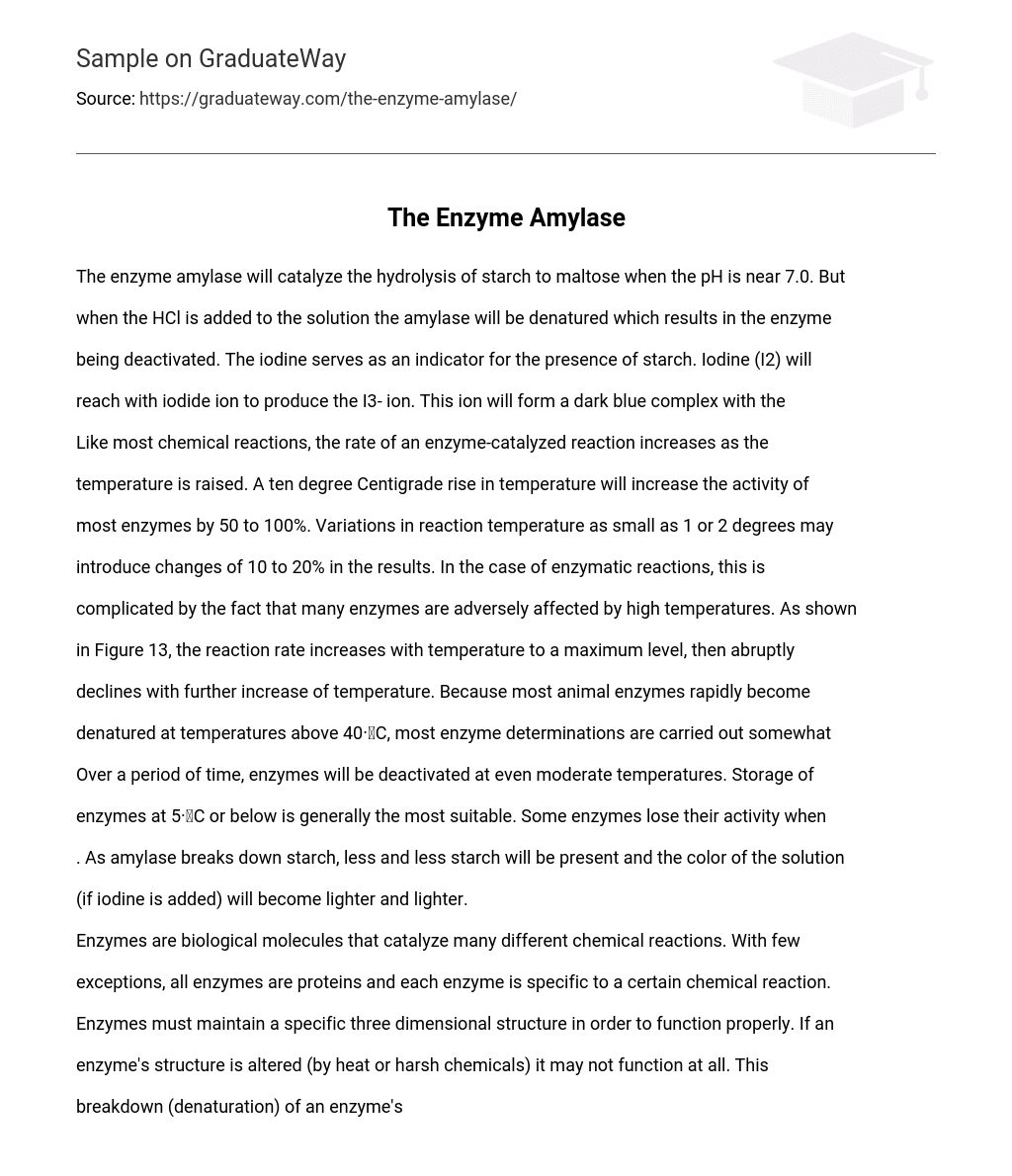The enzyme amylase can convert starch into maltose through hydrolysis at a pH of approximately 7.0. However, the addition of HCl will denature and deactivate the amylase. Iodine acts as an indicator for starch presence by forming a dark blue complex with iodide ions (I3-).
Like other chemical reactions, increasing temperature enhances the rate of enzyme-catalyzed reactions. A ten-degree Celsius rise in temperature can increase most enzymes’ activity by 50 to 100%. Even small temperature changes of only 1 or 2 degrees can cause variations in results by 10 to 20%. However, high temperatures have adverse effects on many enzymes. As shown in Figure 13, initially, the reaction rate increases with temperature until it reaches its maximum level. Beyond that point, further temperature increases significantly decrease the reaction rate.
Enzymes in animals are easily denatured at temperatures above 40·C, so enzyme determinations should be done over time. Storing enzymes at 5·C or below is usually best to prevent deactivation. Some enzymes lose activity when their substrate is consumed, such as amylase breaking down starch and resulting in a lighter solution with added iodine. Enzymes are proteins that catalyze chemical reactions and require a specific structure for proper functioning. If an enzyme’s structure is altered by heat or harsh chemicals, it may stop working altogether, affecting its activity.





